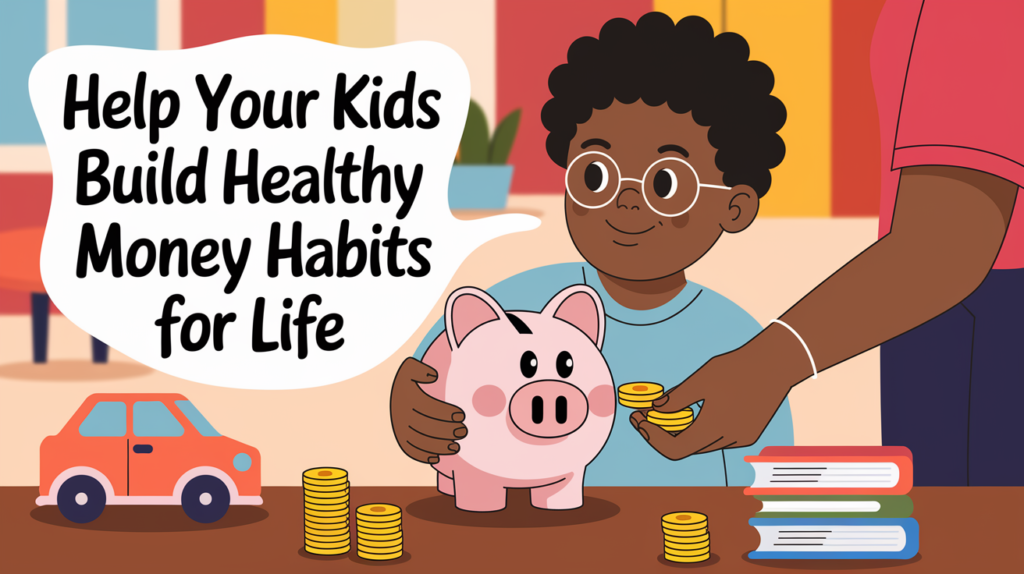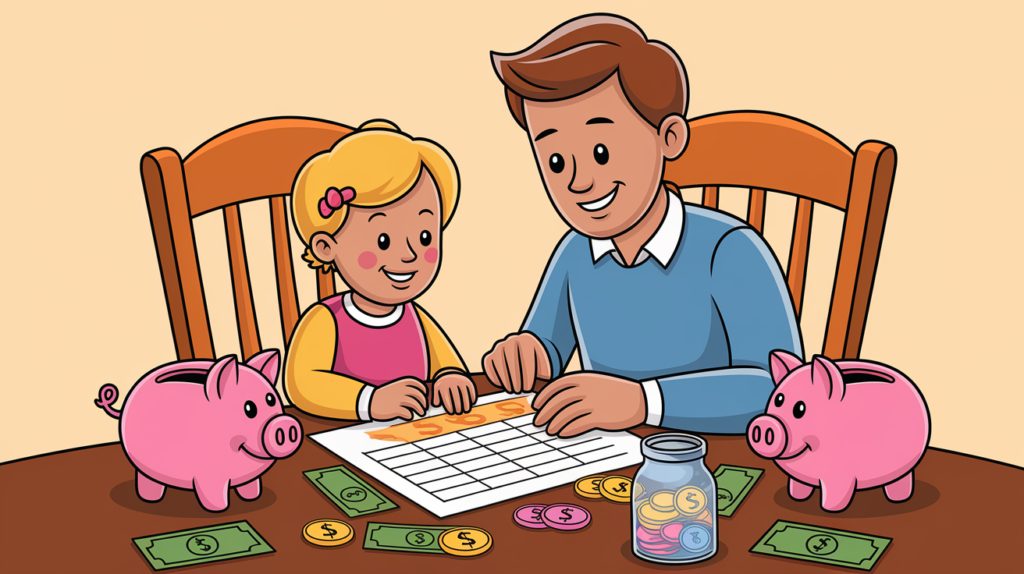
Wondering How to Teach Kids About Money? Here’s How
Raising kids who understand money isn’t about limiting what they can have—it’s about giving them the tools to make smart, confident choices for life. Whether your child is saving up for a toy or dreaming about their first car, teaching budgeting early gives them a huge head start.
And here’s the best part: learning about money can be fun, empowering, and completely age-appropriate—with no guilt, no lectures, and zero deprivation.
Let’s explore 9 simple ways to help your child understand spending, saving, and giving in a way that’s hands-on, rewarding, and even kind of exciting.
1. Talk About Money Like It’s Normal (Because It Is)
Kids pick up on how we treat money. Make budgeting and financial decisions part of everyday conversation—like planning a fun day out, shopping for gifts, or saving for a family vacation. It’s not about restricting—it’s about involving them in cool, real-life choices.
2. Show Them How Money Works Through Earning
Whether it’s a few dollars for helping out, or bigger kid-friendly jobs like walking dogs or helping a neighbor, earning money teaches pride and responsibility. It’s empowering—not limiting—for kids to know they can earn and manage their own money.
3. Try the Spend-Save-Give Jar Method
This isn’t about “you can’t spend that.” It’s about balance. Using three jars (or envelopes)—Spend, Save, Give—helps your child see that they can enjoy their money now and plan for cool things later. It builds awareness without taking away the fun.

4. Let Them Make Their Own (Low-Stakes) Choices
Bought that dollar-store toy that broke after a day? That’s a win! Kids learn so much from their own choices. It’s not about avoiding mistakes—it’s about helping them grow their decision-making muscle while the stakes are small and manageable.
5. Set Goals That Feel Good
Encourage them to save for things that excite them—a toy, a video game, a friend’s birthday gift, or even a donation to a cause they care about. Track progress together and celebrate when they reach their goal. It builds pride, not pressure.
6. Use Budgeting as a Way to Explore Their Interests
Got a little artist? Help them plan a “budget” for art supplies. Aspiring baker? Price out ingredients for a cupcake sale. Budgeting doesn’t mean saying “no”—it’s just about how to say “yes” with a plan.
7. Upgrade to a Kid-Friendly Bank Account When Ready
Opening a savings account (or even using a digital debit card made for kids) can be a big, exciting step. They’ll feel so grown up—and it helps connect budgeting with real-world independence.

8. Make Learning Fun with Apps, Games & Books
Money doesn’t have to be serious. Use fun tools like games (like Monopoly), digital planners, and age-appropriate books to keep things playful while teaching valuable lessons.
9. Be the Example They’ll Model After
Kids learn more from what we do than what we say. When they see you budget for things you love, save for fun goals, or compare prices at the store, they naturally start doing the same. Modelling financial confidence makes it stick.
Final Thoughts: You’re Not Limiting—You’re Equipping
Teaching kids about budgeting isn’t about cutting back—it’s about building up. You’re helping them create habits that let them enjoy what they have and feel in control of what’s next.
It’s not about saying “you can’t”—it’s about helping them say, “I’ve got this.”